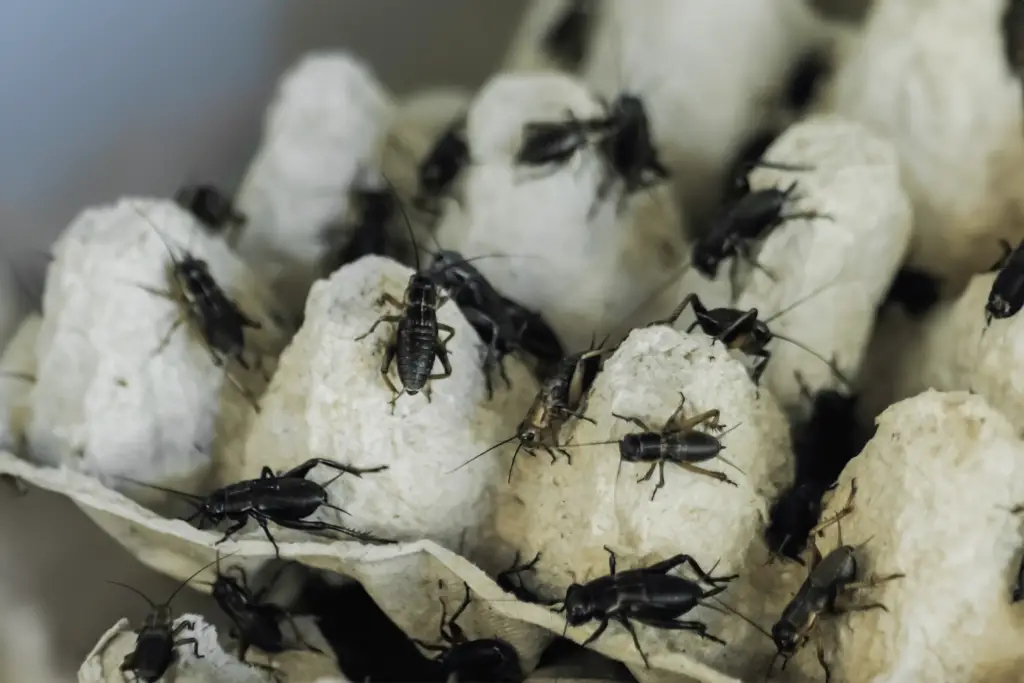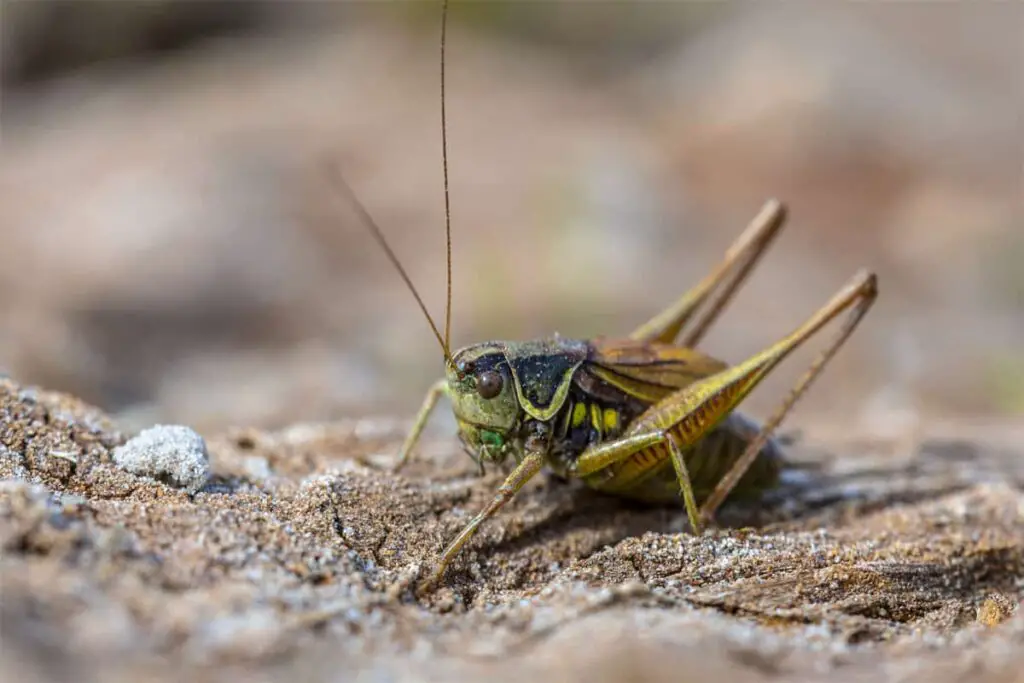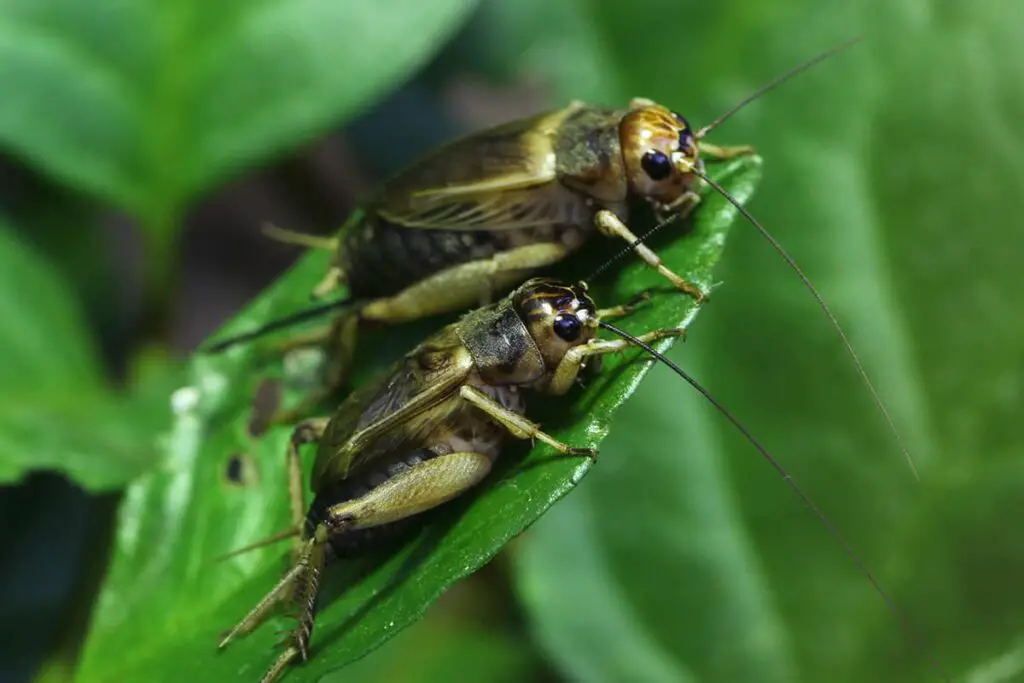
When raising crickets, whether as pets, for fishing bait, or as a food source for other animals, choosing the right size enclosure is crucial. It not only affects their health and wellbeing but also makes the management process easier for you. Crickets require space to move, adequate ventilation, and an environment that closely mimics their natural habitat to thrive.
Finding a balance is essential; too cramped and the risk of disease skyrockets, too spacious and maintaining a controlled environment becomes challenging. Generally speaking, about 1 gallon per 100 crickets is a good starting point. This allows them enough room to live comfortably without overcrowding, ensuring they remain active and healthy.
Temperature control is another key aspect; crickets do best in temperatures ranging from 60°F to 85°F. It’s important to monitor the temperature within their habitat carefully. The enclosure should also be escape-proof to prevent any adventurous critters from making an unscheduled exit. The right sized habitat can make all the difference in successfully keeping crickets.
Understanding Cricket Enclosures
When setting up an enclosure for crickets, your main considerations should be the enclosure type and the size parameters to ensure a healthy habitat for your feeder crickets.
Enclosure Types
You have several options for housing crickets, each varying in material and design. Glass terrariums and plastic containers are common choices and are both suitable if they’re properly ventilated. Some keepers use modified storage tubs, which are cost-effective and can be easily adapted with mesh covers for air circulation. Ensure that your choice has secure lids or screens to prevent escapes.
Ideal Size Parameters
The size of your cricket enclosure should relate directly to the number of crickets you plan to house. For a small number of crickets to feed one or two pets, a compact enclosure of about 4″ x 6″ will suffice. Should your colony be larger, supplying food for three or more pets, you’ll need much more space. Typical sizes for such situations are 8″ x 16″ x 12″ or even 20″ x 10″ x 12″. Remember, overcrowding can lead to unhealthy conditions, so providing adequate space is crucial for the well-being of your crickets.
Factors Influencing Enclosure Size
When setting up a habitat for crickets, the size of the enclosure is a primary factor that will affect their health and productivity. The right size hinges on various specific elements that must be carefully considered.
Cricket Species
Different cricket species require different enclosure conditions. The common house cricket thrives best in temperatures between 27°C and 32°C, so the enclosure size should allow for good air circulation to maintain this climate without drastic fluctuations.
Number of Crickets
The quantity of crickets you plan to house directly impacts the necessary size of the enclosure. A few dozen crickets might be comfortable in a small container, while hundreds require a significantly larger space. Higher density can increase stress and disease risk among the crickets, so adequate space is imperative.
Intended Use
Whether you’re aiming for a breeding setup or simply keeping feeder crickets, the enclosure size needs to match your intent. Breeding crickets may need additional space for laying eggs and raising offspring, whereas feeder crickets require enough room to remain healthy until they are fed to your pets.
Design and Accessories
When setting up an enclosure for crickets, it’s crucial to consider factors that will keep them healthy and make maintenance easy for you. Let’s focus on the specific requirements for ventilation and feeding areas that you’ll need to integrate into your cricket enclosure design.
Ventilation Requirements
Your cricket enclosure must have adequate ventilation to provide fresh air and prevent the buildup of harmful gases. For this purpose, many designs include aluminum screens or fine mesh on the sides or top of the enclosure. Ensure the mesh is fine enough to prevent crickets from escaping but allows air to circulate freely. Here’s how to check for proper ventilation:
- Look for: Multiple ventilation areas on different sides
- Avoid: Oversized openings that crickets can escape through
- Measure: Openings should not exceed 1/4 inch in any dimension
Feeding and Watering Areas
The feeding and watering areas should be easy to access and clean, with a clear separation from the bedding to keep the enclosure tidy. Consider these specifics for feeding and watering:
- Water: Provide a shallow water dish with a sponge or cotton balls to prevent drowning
- Food: Use shallow dishes for dry food and gel-based feeds to minimize waste and spoilage
- Placement: Position food and water away from corners to discourage hiding and ease of access
By focusing on these targeted design aspects, your cricket’s habitat will be both functional and hospitable.
Frequently Asked Questions
When setting up an enclosure for crickets, knowing the right size and environment is crucial for their health and breeding. These FAQs will provide you with specific guidance.
How do I set up an enclosure for cricket breeding?
To set up a cricket breeding enclosure, you need a space that’s large enough for the colony you want to support, which typically means at least a 10-gallon tank for every 100 crickets. Ensure proper ventilation, temperature control, and a diet rich in nutrients to promote successful breeding.
Can I use a 5-gallon tank for housing crickets, and if so, how many?
A 5-gallon tank can house a small number of crickets, ideal for feeding one or two animals. If you have more animals or need a larger breeding colony, a bigger tank is necessary.
What are the best practices for storing live crickets?
For storing live crickets, maintain a consistent temperature between 75-85°F, provide adequate ventilation, and avoid exposure to direct sunlight or drafts. Monitoring with a thermometer helps to prevent harmful temperature fluctuations.
Are DIY cricket containers suitable for maintaining crickets, and how do you build one?
DIY cricket containers are practical and can be suitable if built correctly. The key is ensuring proper ventilation by adding air holes, a secure lid to prevent escapes, and smooth interior walls to prevent crickets from climbing out.
What are the essentials for a large cricket container to keep them healthy?
For a large cricket container, essentials include adequate space for the number of crickets, proper ventilation, a heat source to maintain the right temperature, and structures like egg cartons for climbing and hiding. Regular cleaning and fresh food and water are also vital.
When choosing a commercial cricket bin, what factors should I consider?
When selecting a commercial cricket bin, consider the size based on your needs, the material (plastic or fabric), ease of access for feeding and cleaning, and built-in features such as feeding ports and dispensers that minimize the escape of crickets during maintenance.
Driven by a passion for those tiny creatures that rule our world, we at Bug Domain strive to be your go-to resource for information on insects.



